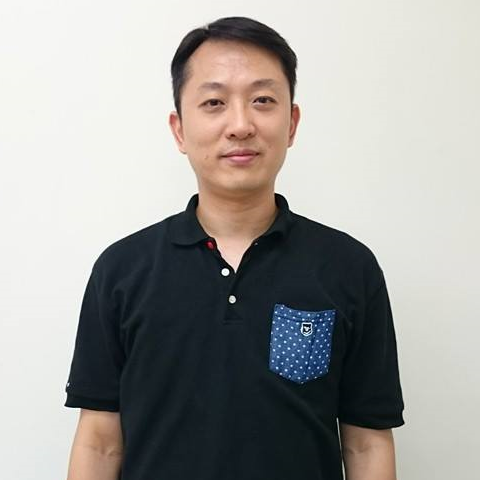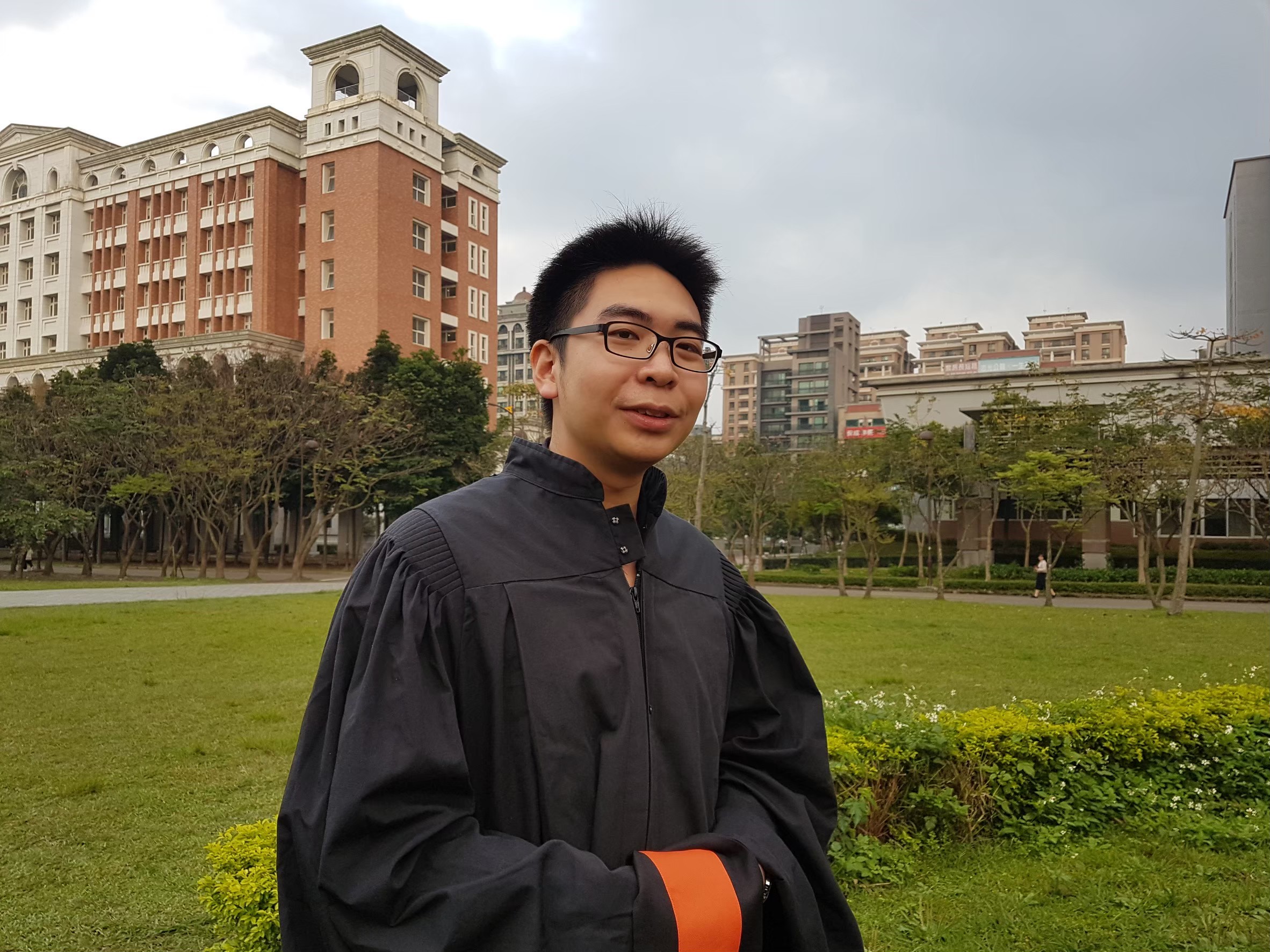Welcome To iRAT
Intelligent Radio Access Technology Lab
National Tsing Hua University
Since 2008 from
AWAT, NCKUNews
- [2025.09.04]線性代數加簽名單公告 11410_線性代數_加簽名單
- [2024.11.11]恭喜莊承叡同學論文榮獲IEEE Transactions on Cognitive Communications and Networking接受。
- [2024.11.01]恭喜許湘玲同學榮獲2024潘文淵文教基金會獎學金。
Introduction
- The Intelligent Wireless Access Technology Laboratory is dedicated to advanced research in intelligent wireless access technologies. Our goal is to develop innovative wireless communication technologies that will make wireless access networks smarter and capable of supporting cutting-edge applications and services. At the same time, we aim to overcome the energy consumption challenges posed by high-speed and massive device connectivity, ensuring that mobile communications continue to evolve to meet the needs of future lifestyles.
- In addition to cutting-edge communication technology research, the laboratory also emphasizes industry collaboration, English communication skills, and teamwork, aiming to develop our members into highly valued research and development professionals within the industry.
- We are currently interested in the following fields:

Intelligentizing radio access networks (RAN) for 6G
The Radio Access Network (RAN) in cellular systems provides wireless connections to individual user equipment (UE) or machines. As the key component of cellular systems, RAN handles numerous tasks, such as signal processing, interference mitigation, and resource allocation. The joint optimization of all these tasks can offer the best user experience but the complexity is extremely high. In 6G, it is foreseen that more diverse use cases will be supported that dramatically complicates the optimization and operation of RAN. Recent advances on Artificial Intelligence (AI)/Machine Learning (ML) can be of great help to enable exciting 6G applications through intelligentizing RAN. Our group looks at potential AI/ML solutions to make smart RAN possible for 6G.
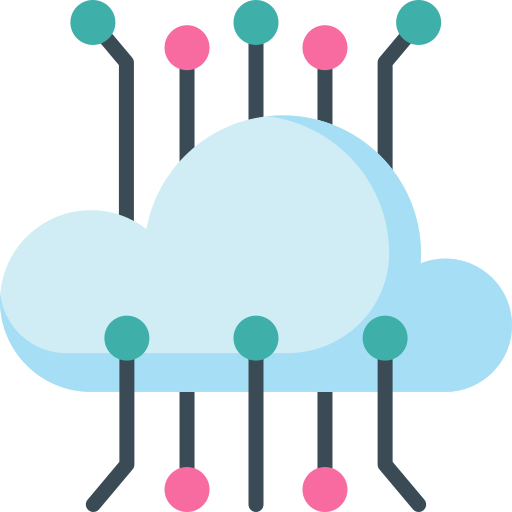
Multi-access edge computing/learning
Multi-access mobile edge computing (MEC) allows users/devices to offload computational-heavy tasks, such as training for machine learning models, mobile Augmented Reality (AR)/Virtual Reality (VR), and so on, to the servers installed at the edge of wireless networks. Due to limited radio spectrum, offloading a large volume of data from many users/devices to the edge serves is challenging using existing wireless technologies. Our group is interesting in studying advanced technologies to support MEC.
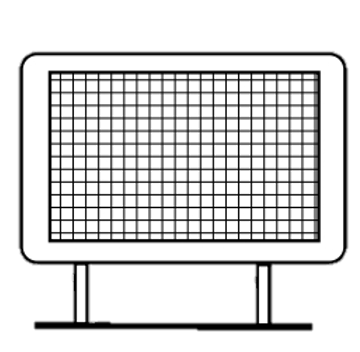
Reconfigurable intelligent surface (RIS)
RIS is a meta-surface consisting of a large number of low-cost passive reflecting elements. The phase of each element can be electronically controlled to reflect the radio signals in a controllable manner. In this way, RIS opens the opportunity of smartly improving the radio propagation particularly when a direct communication link is not available. In order to make a good use of RIS, the reflecting phases for RIS elements need to be tuned properly, resulting in high complexity and overhead. Our group has developed low-complexity and robust approaches to configure RIS in real time.

Green communications
Energy harvesting (EH) is an emerging technique that captures energy from external sources, e.g., thermal energy, solar radiation, changes in magnetic field, and radio-frequency (RF). By charging from ambient sources, low-power electronics can operate without frequent battery replacement. It is expected that EH technique will be the key enabler of internet of things (IoT) for ubiquitous environment monitoring and smart factories. The main challenge of EH is that the harvested energy is much weaker than the required energy for operating IoT devices. Our group focuses on designing novel communications strategies to support zero energy air interfaces.
Our Professor
學經歷
2021/8-至今
國立清華大學電機工程系教授
2017/8-2021/8
國立成功大學電機工程系教授
2013/8-2017/7
國立成功大學電機工程系副教授
2008/8-2013/8
國立成功大學電機工程系助理教授
2008/5-2008/6
加拿大滑鐵盧大學電機系博士後
2004/1-2008/4
加拿大滑鐵盧大學電機博士
1998-2000
國立中興大學電機碩士
1998-2000
台灣西門子吉悌電信研發工程師
榮譽
2018
科技部優秀年輕學者研究計畫
2017
成功大學教學傑出教師獎
2015
WOCC 最佳論文獎
2015
IEEE Tainan Section Best GOLD Member Award
2014
成功大學電資學院教學優良教師獎
2010
IEEE WCNC 最佳論文獎
2005-2007
加拿大滑鐵盧大學 傑出研究生獎學金
2004-2007
加拿大滑鐵盧大學 國際研究生獎學金
專長及研究領域
無線接取技術
機器學習
零耗能通訊
Publication
期刊論文
- “Beam selection and power allocation for massive connectivity in millimeter wave NOMA Systems,” Y.-T. Chiu and K.-H. Liu, IEEE Access, vol. 8, pp. 53868-53882, May 2020
- “Performance of off-grid small cells with non-uniform deployment in two-tier HetNet,” K.-H. Liu and T.-Y. Yu, IEEE Trans. Wireless Commun., vol. 17, no. 9, pp. 6135-6148, Sept. 2018.
- “Performance Improvement for RF Energy-Harvesting Relays via Relay Selection,” T.-L. Kung and K.-H. Liu, IEEE Trans. Veh. Technol., vol. 66, no. 9, pp. 8482-8494, Sept. 2017.
- “An Equivalent Analysis for Handoff Probability in Heterogeneous Cellular Networks,” S.-Y. Hsueh and K.-H. Liu, IEEE Commun. Lett., vol. 21, no. 6, pp. 1-4, June 2017.
- "Performance analysis of relay selection for cooperative relays based on wireless power transfer with finite energy storage," K.-H. Liu, IEEE Trans. Veh. Technol., vol. 65, no. 7, pp. 5110-5121, July 2016.
- "Outage performance of relay selection with spatially random relays using RF energy harvesting," K.-H. Liu, Wireless Commun. and Mobile Computing, vol. 16, no. 10, pp. 1306-1316, July 2016.
- "Toward self-sustainable cooperative relays: state-of-the-art and the future," K.-H. Liu and P. Lin,IEEE Wireless Commun. Mag., vol. 53, no. 6, pp. 56-62, June 2015.
- "Relay selection for cooperative relaying networks with small buffers," S.-L. Lin and K.-H. Liu,IEEE Trans. Veh. Technol., vol. 65, no. 8, pp. 6562-6575, Aug. 2016.
- "Temporal reuse in cooperative relay networks via destination feedback" K.-H. Liu IEEE Trans. Veh. Technol., accepted for publication.[IF 2.063]
- "Outage and delay performance of generalized multi-relay cooperation protocols over Rayleigh fading channels" K.-H. Liu IEEE Trans. Veh. Technol., accepted for publication. [IF 2.063]
- "Outage performance of cooperative relaying with fixed and best-selected mobile relays over non-identically distributed links" K.-H. Liu IEEE Wireless Commun. Lett., vol. 1, no. 5, pp. 548-551, Oct. 2012
- "On the performance of time-orthogonal incremental relaying based on demodulate-and-forward with distributed channel access" K.-H. Liu IEEE Trans. Veh. Technol., vol. 61, no. 2, pp. 737-747, Feb. 2012 [IF 2.063]
- "Performance analysis of threshold relaying with random channel access over non-identically distributed Rayleigh fading channels" K.-H. Liu and H. H. Chen IEEE J. Select. Areas Commun., vol. 30, no. 9, pp. 1703-1710, Oct. 2012 [IF 3.121] [Rank 4 Influential Journal in Telecommunications] [Rank 5 Influential Journal in IEEE]
- "Interference-resistant cooperative wireless networks based on complementary codes" K.-H. Liu, H.-Y. Shin, and H. H. Chen Wireless Commun. and Mobile Computing, vol. 11, no. 6, pp. 692-706, June 2011 [IF 0.863] [Cite # 4]
- "A multi-channel token ring protocol for QoS provisioning in inter-vehicle communications" Y. Bi, K.-H. Liu, L. X. Cai, X. Shen, and H. Zhao IEEE Trans. Wireless. Commun., vol. 8, no. 11, pp. 5621-5631, Nov. 2009 [IF 2.58] [Cite # 33]
- "Post-filtering approach to output feedback variable structure control for single-input-single-output sampled-data systems" C.F. Lin, W.C. Su, K.-H. Liu IET Control Theory and Applications, vol. 3, no. 8, Aug. 2009 [IF 0.99]
- "Performance analysis of distributed reservation protocol for UWB-based WPAN" K.-H. Liu, X. Shen, R. Zhang, and L. Cai IEEE Trans. Veh. Technol., vol. 58, no. 2, Feb. 2009 [IF 2.063] [Cite # 28]
- "Performance analysis of prioritized MAC in UWB-WPAN with bursty multimedia traffic" K.-H. Liu, X. Ling, X. Shen, and J. W. Mark IEEE Trans. Veh. Technol., vol. 57, no. 4, pp. 2462-2473, July 2008 [IF 2.063] [Cite # 22]
- "Multi-class utility-based scheduling for UWB networks" K.-H. Liu, L. Cai, and X. Shen IEEE Trans. Veh. Technol., vol. 57, no. 2, pp. 1176-1187, Mar. 2008 [IF 2.063] [Cite # 22]
- "Exclusive-region based scheduling algorithms for UWB WPAN" K.-H. Liu, L. Cai, and X. Shen IEEE Trans. Wireless Commun., vol. 7, no. 3, Mar. pp. 933-942, 2008 [IF 2.418] [Cite # 29]
- "Power allocation and scheduling for ultra-wideband wireless networks" J. Cai, K.-H. Liu, X. Shen, J. W. Mark and T. D. Todd IEEE Trans. Veh. Technol., vol. 57, no. 2, Mar. 2008 [IF 2.063] [Cite # 19]
- "Efficiency and goodput analysis of Dly-ACK in IEEE 802.15.3" K.-H. Liu, H. Rutagemwa, X. Shen, and J. W. Mark IEEE Trans. Veh. Technol., vol. 56, no. 6, Nov. 2007 [IF 2.063] [Cite # 16]
- "An efficient resource management scheme for UWB networks with simultaneous transmissions" H. Jiang, K.-H. Liu, W. Zhuang, and X. Shen IEEE Trans. Wireless Commun., vol. 6, no. 8, Aug. 2007 [IF 2.418]
會議論文
- “Group-based Multi-User Tracking in Mobile Millimeter-Wave Networks,” P.-Y. Lai and K.-H. Liu, in Proc. IEEE WCNC, Virtual Conference, May 25-28, 2020.
- “Blockage effect and beam cooperation in indoor hotspot based on 3GPP NR blockage model,” Y.-H. Yang and K.-H. Liu, in Proc. IEEE ICC, Shanghai, China, May 20-24, 2019.
- “Performance of network-centric clustering for coordinated joint transmission,” J.-Y. Chen, K.-H. Liu and S.-L. Su, IEEE VTC-Fall, Chicago, IL, Aug. 27-30, 2018.
- “Relay selection for energy-harvesting relays with short-term energy storage,” T.-L. Kung and K.-H. Liu, in Proc. IEEE Globecom, Washington, DC, Dec. 04-08, 2016
- “Coverage performance of heterogeneous cellular networks with dependent cell deployment,” C.-C. Lin, K.-H. Liu, and S.-L. Su, in Proc. 11th International Symposium on Broadband Multimedia Systems and Broadcasting (BMSB), Nara, Japan, June 1-3, 2016
- "Outage-optimal relay selection for energy-harvesting relays based on power splitting," Y.-T. Chang and K.-H. Liu, in Proc. Wireless and Optical Communication Conference (WOCC), Oct. 23 - Oct. 24, Taipei, Taiwan, 2015.
- "Efficient mode selection for D2D Communication: an interference upper bound approach," K.-H. Liu, in Proc. International Conference on Wireless Communications and Signal Processing (WCSP), Oct. 15 - Oct. 17, Nanjing, China, 2015.
- "Load-based cell association for load balancing in heterogeneous cellular networks," G.-T. Chou, K.-H. Liu, and S.-L. Su, in Proc. IEEE PIMRC, Aug. 30 - Sept. 2, Hong Kong, 2015.
- "Battery-aware relay selection for energy-harvesting relays with energy storages," Y.-H. Lee and K.-H. Liu, in Proc. IEEE PIMRC, Aug. 30 - Sept. 2, Hong Kong, 2015.
- "Selection cooperation using RF energy harvesting relays with finite energy buffer" K.-H. Liu Submitted to IEEE WCNC'14.
- "Green cooperative relaying in multi-source wireless networks with high throughput and fairness provisioning" K.-Y. Lin and K.-H. Liu in Proc. Asia-Pacific Signal and Information Processing Association Annual Summit and Conference (APSIPA ASC), Kaohsiung, Taiwan, Oct. 29-Nov. 1, 2013
- "Efficient Relay Selection in Multi-Source Cooperative Networks" W.-Y. Shen and K.-H. Liu in Proc. Computers, Communications and IT Applications Conference, Hong Kong, China, Apr. 2-3, 2013
- "Adaptive incremental relaying in multi-antenna fixed relay networks K.-H. Liu in Proc. IEEE International Conference on Communications in China (ICCC), Beijing, China, Aug. 15-17, 2012
- "Distributed incremental cooperative relaying with quantized feedback" K.-H. Liu in Proc. IEEE Globecom'11, Houston, TX, Dec. 05-09, 2011
- "Adaptive pairwise network coding in multi-session wireless relay networks" K.-H. Liu in Proc. IEEE WCNC'11, Quintana-Roo, Mexico, Mar. 28-31, 2011
- "Double threshold digital relaying for cooperative wireless networks" K.-H. Liu, in Proc. IEEE VTS-Spring'10, Taipei, Taiwan, May 16-19, 2010
- "A delay-bounded relaying diversity scheme in digital cooperative wireless networks" K.-H. Liu in Proc. IEEE WCNC'10, Sydney, Australia, Apr. 18-21, 2010 [Best Paper of MAC Track]
- "Probabilistic relay selection for fast selection cooperation in half-duplex wireless networks" K.-H. Liu and H.H. Chen in Proc. IEEE Globecom'09, Honolulu, HI, Nov. 30 - Dec. 4, 2009
- "A multi-channel token ring MAC protocol for inter-vehicle commmunications" Y. Bi, K.-H. Liu, X. Shen, and H. Zhao in Proc. IEEE Globecom'08, New Orleans, LA, Nov. 30 - Dec. 4, 2008
- "A novel overlay token ring protocol for inter-vehicle communication" J. Zhang, K.-H. Liu, and X. Shen in Proc. IEEE ICC'08, Beijing, China, May 19-23, 2008
- "Delay analysis of distributed reservation protocol with UWB shadowing channel for WPAN" K.-H. Liu, X. Shen, R. Zhang, and L. Cai in Proc. IEEE ICC'08, Beijing, China, May 19-23, 2008 [nominated for the best paper award]
- "A novel performance model for distributed prioritized MAC protocols" X. Ling, K.-H. Liu, Y. Cheng, X. Shen, and J. W. Mark in Proc. IEEE Globecom'07, Washington, DC, Nov. 26-30, 2007
- "Performance analysis of hybrid medium access protocol for wireless PANs" L. X. Cai, K.-H. Liu, H. Rutagemwa, X. Shen, and J. W. Mark in Proc. IEEE CCNC'07, Las Vegas, NV, Jan. 11-13, 2007, pp. 445-449
- "Effective scheduling for UWB networks using discrete stochastic optimization" K.-H. Liu, L. Cai, and X. Shen in Proc. IEEE CCNC'07, Las Vegas, NV, Jan. 11-13, 2007, pp. 624-628
- "Distributed medium access control in pulse-based time-hopping UWB wireless networks" H. Jiang, K.-H. Liu, Z. Whuang, and X. Shen in Proc. IEEE Globecom'06, San Francisco, CA, Nov. 27-Dec. 1, 2006
- "Performance enhancement of medium access control for UWB WPAN" K.-H. Liu, L. Cai, and X. Shen in Proc. IEEE Globecom'06, San Francisco, CA, Nov. 27-Dec. 1, 2006
- "Post-filtering output feedback variable structure control" C.F. Lin, W.C. Su, and K.-H. Liu in Proc. American Control Conference, Portland, OR, June. 8 - 10, 2005, pp. 4655-4660
- "Power allocation and scheduling for MAC layer design in UWB networks" J. Cai, K.-H. Liu, X. Shen, J. W. Mark, and T. D. Todd in Proc. 2nd Int. Conf. QoS in Heterogeneous Wired/Wireless Networks (QShine'05), Orlando, FL, Aug. 22-24, 2005
- "Efficiency and throughput analysis of Dly-ACK in WPANs" K.-H. Liu, H. Rutagemwa, X. Shen, J. W. Mark, and P. H. Ho in Proc. IEEE BROADNETS'05, Boston, MA, Oct. 3-7, 2005, pp. 525-532
專書論文
- K.-H. Liu, L. Cai, X. Shen, “Resource allocation for ultra wideband wireless personal area network,” Unlicensed Mobile Access Technology: Protocols, Architectures, Security, Standards and Applications, Y. Zhang , L. T. Yang , J. Ma (Eds.), CRC Press-Taylor & Francis Group: UK, ISBN: 978-1-4200-5537-52, 2008, pp. 325-347.
- H. Jiang, K.-H. Liu, W. Zhuang, and X. Shen, “A distributed solution for resource allocation in UWB wireless PANs,” Emerging Wireless LANs, Wireless PANs, and Wireless MANs: IEEE 802.11, IEEE 802.15, 802.16 Wireless Standard Family, Y. Xiao and Y. Pan (Eds.), John Wiley & Sons, Inc.: NY, USA, ISBN: 978-0-471-72069-0, 2009, pp. 299-318.
Lab Life
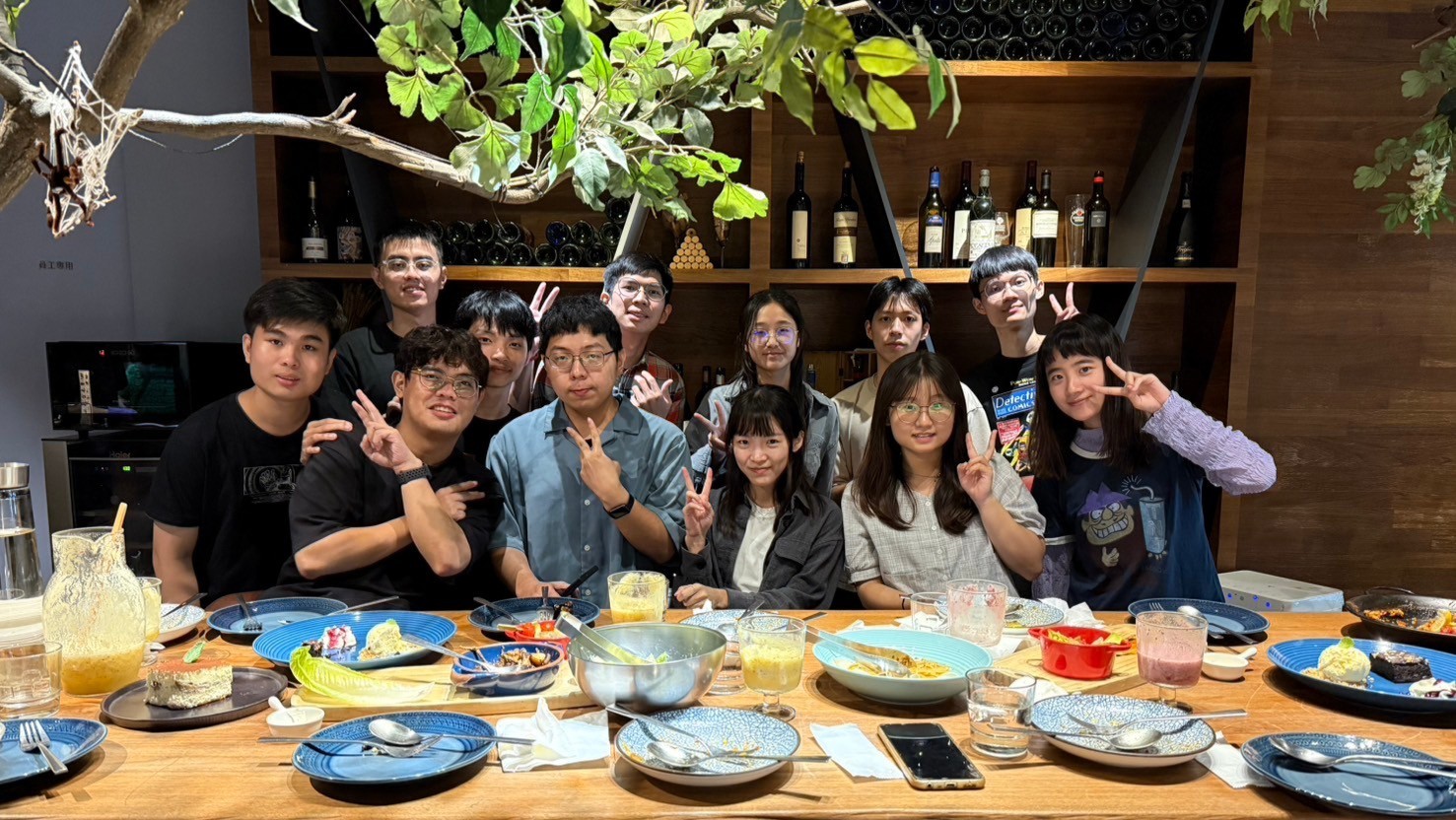
實驗室期中聚餐(2024/10/30)

通訊所校園健走x迎新活動(2024/10/30)

五峰行 (2024/09/28-2024/09/29)
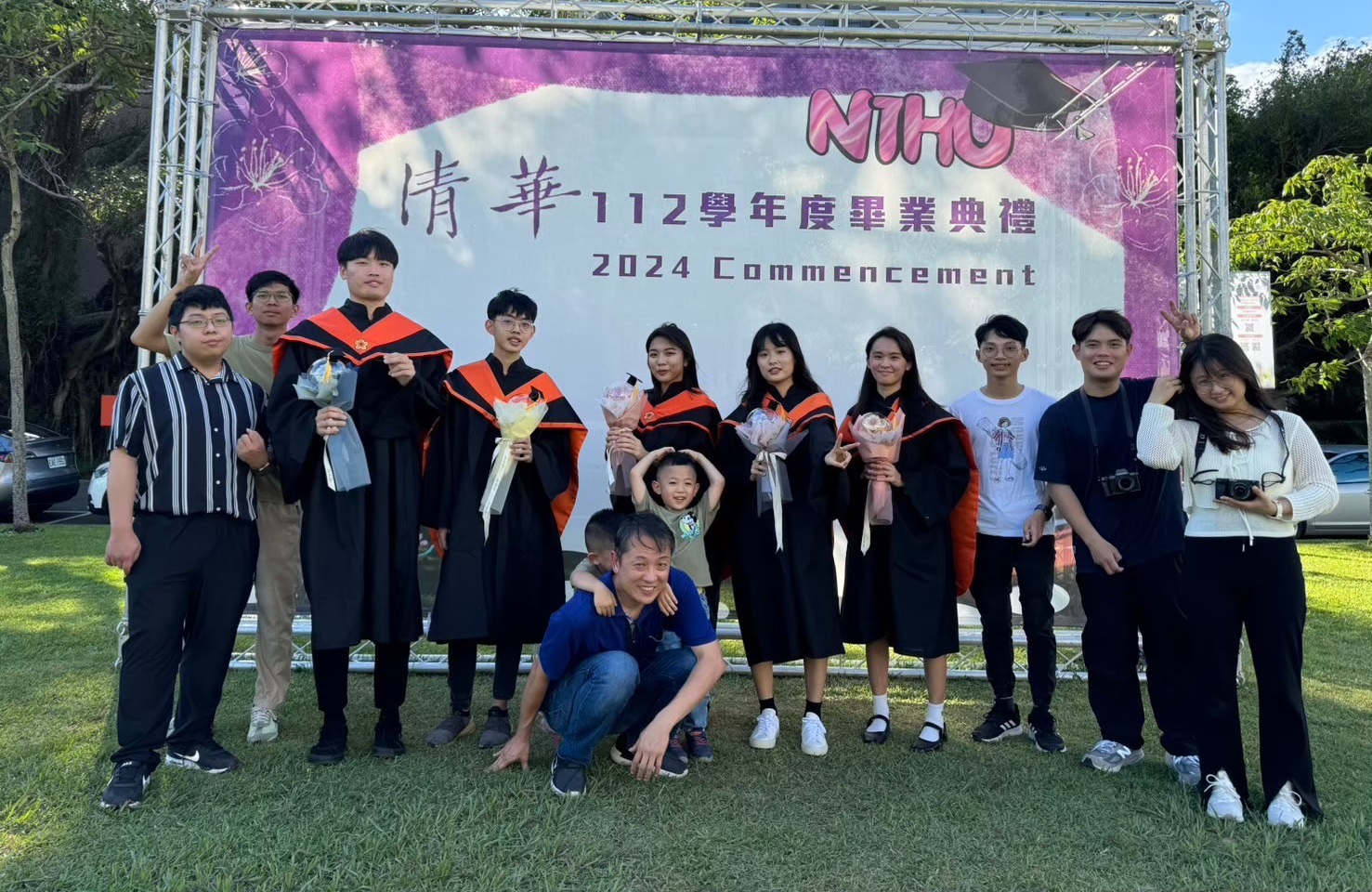
111級畢業照 (2024/06/13)
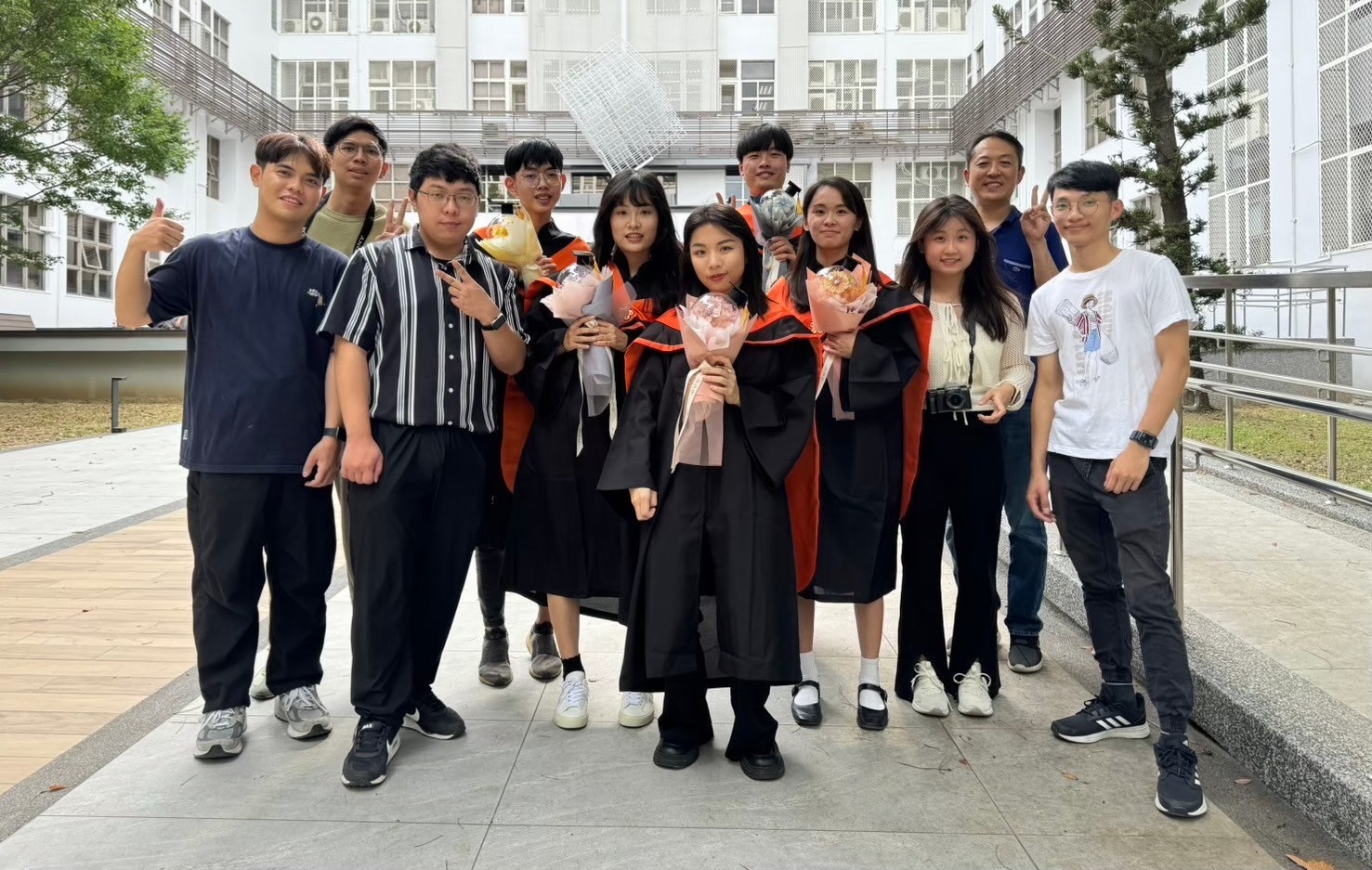
111級畢業照 (2024/06/13)
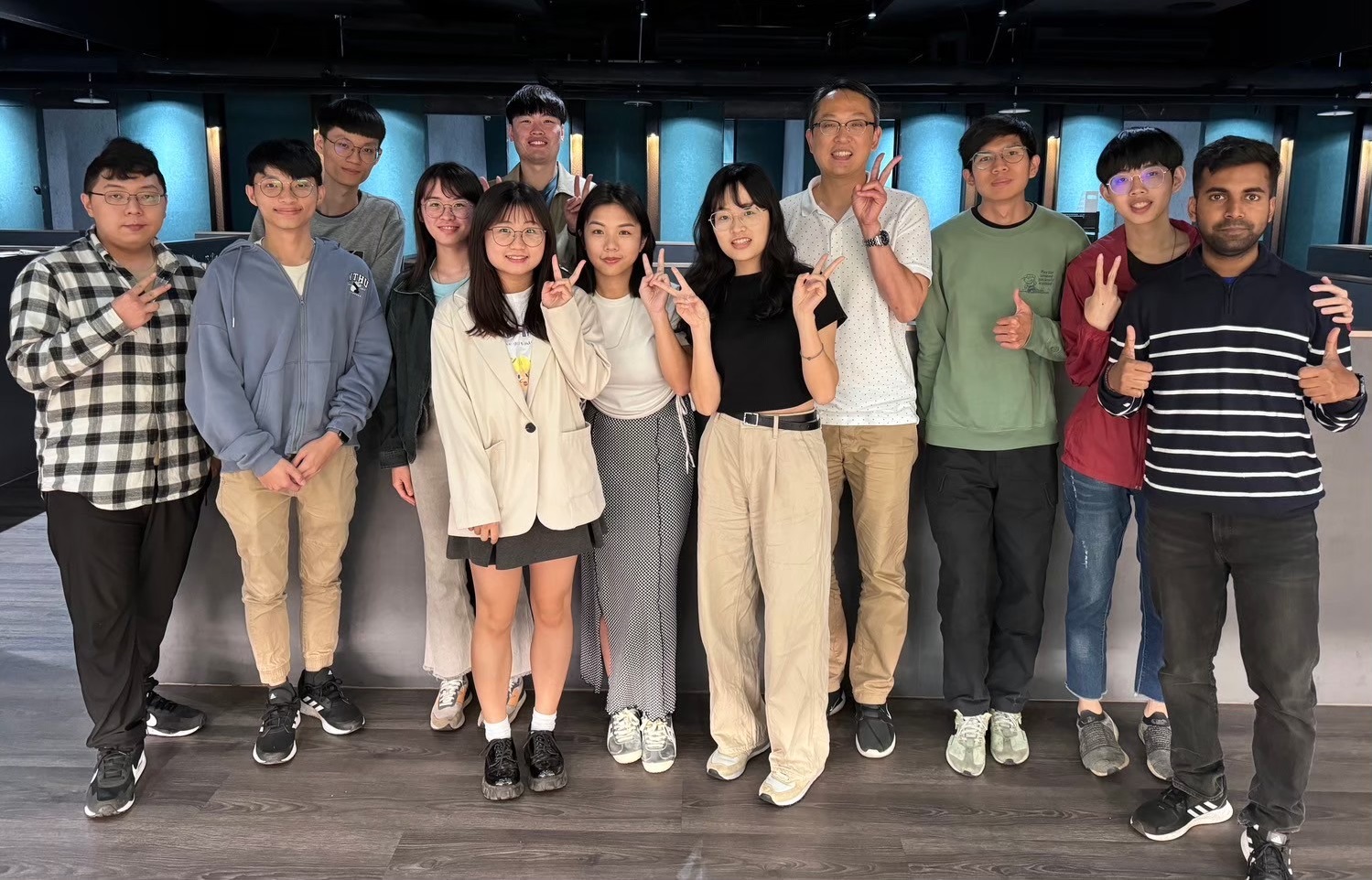
實驗室期初聚餐(2024/4/10)
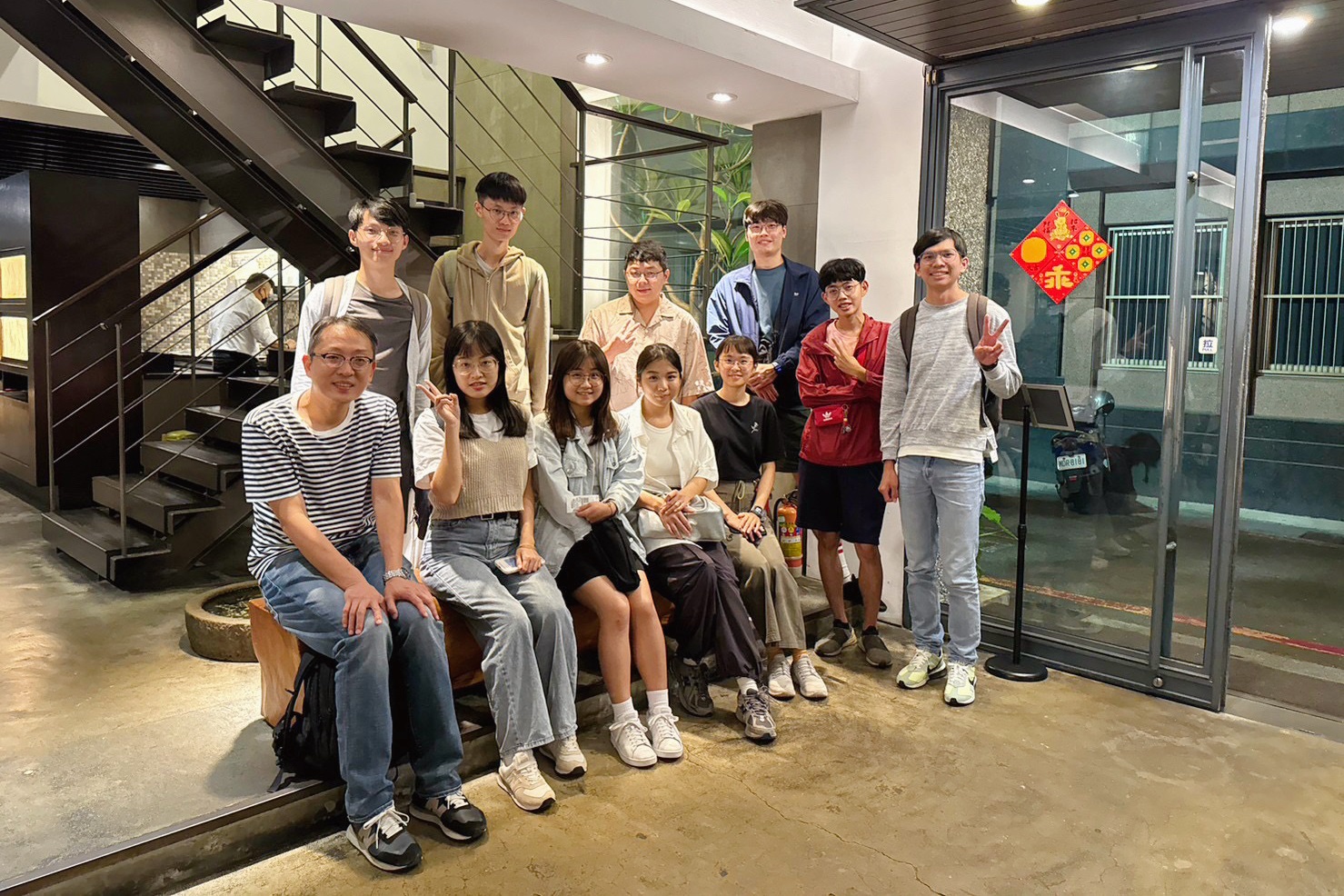
通訊所校園健走x迎新活動(2023/10/24)

通訊所校園健走x迎新活動(2023/10/24)

台南行(2023/09/23-2023/09/24)
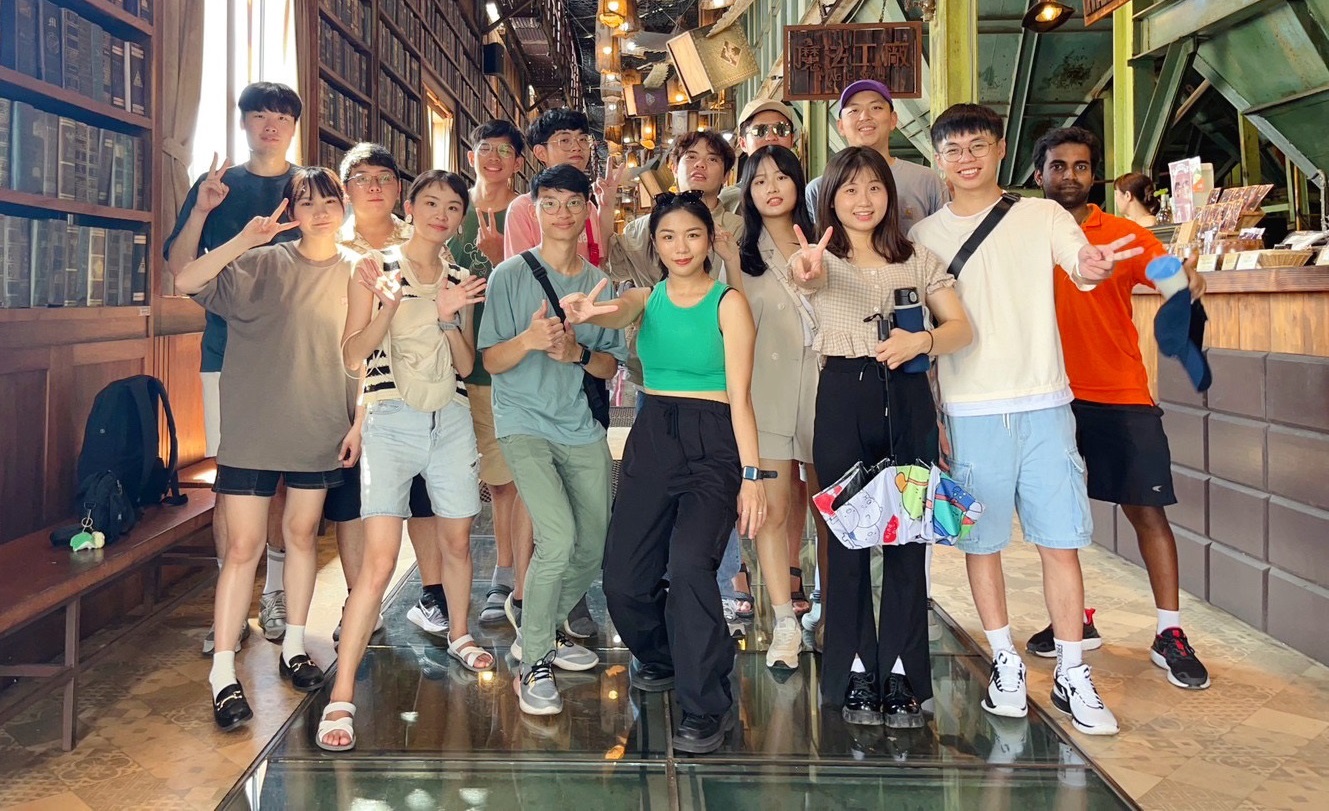
台南行(2023/09/23-2023/09/24)

台南行(2023/09/23-2023/09/24)
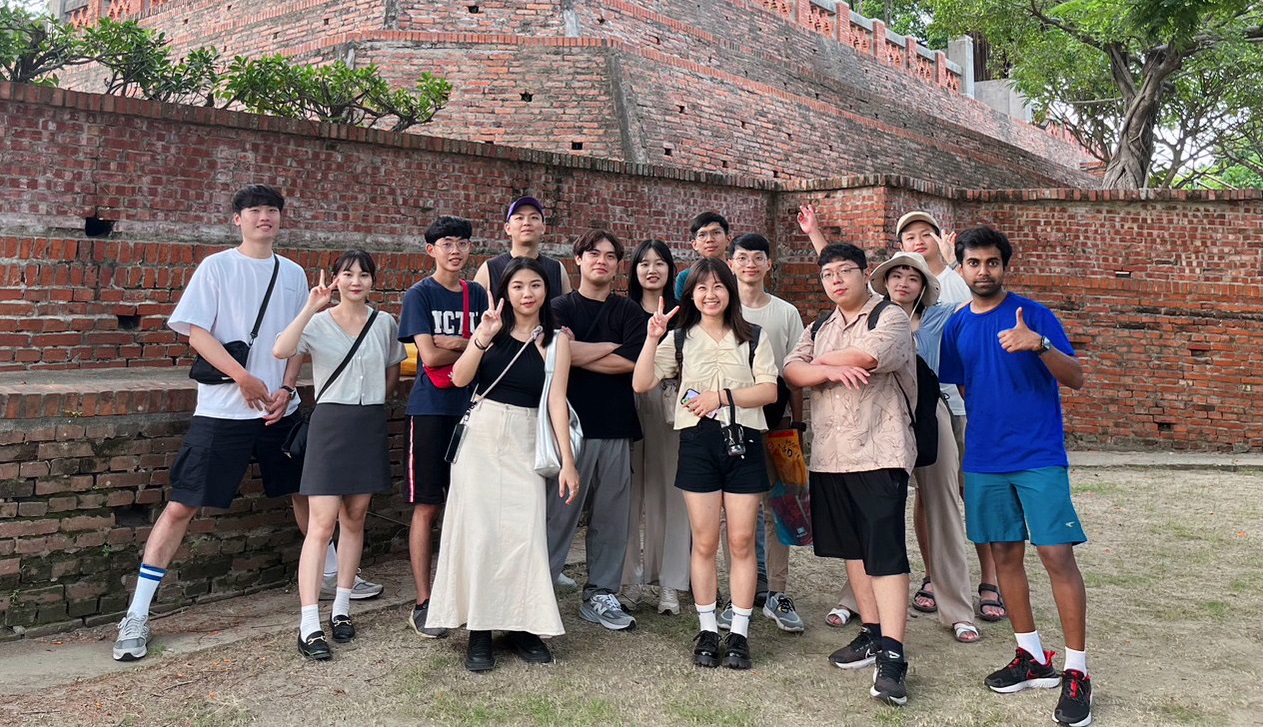
台南行(2023/09/23-2023/09/24)

通訊所所運 (2023/06/17)

實驗室期末聚餐 (2023/06/14)
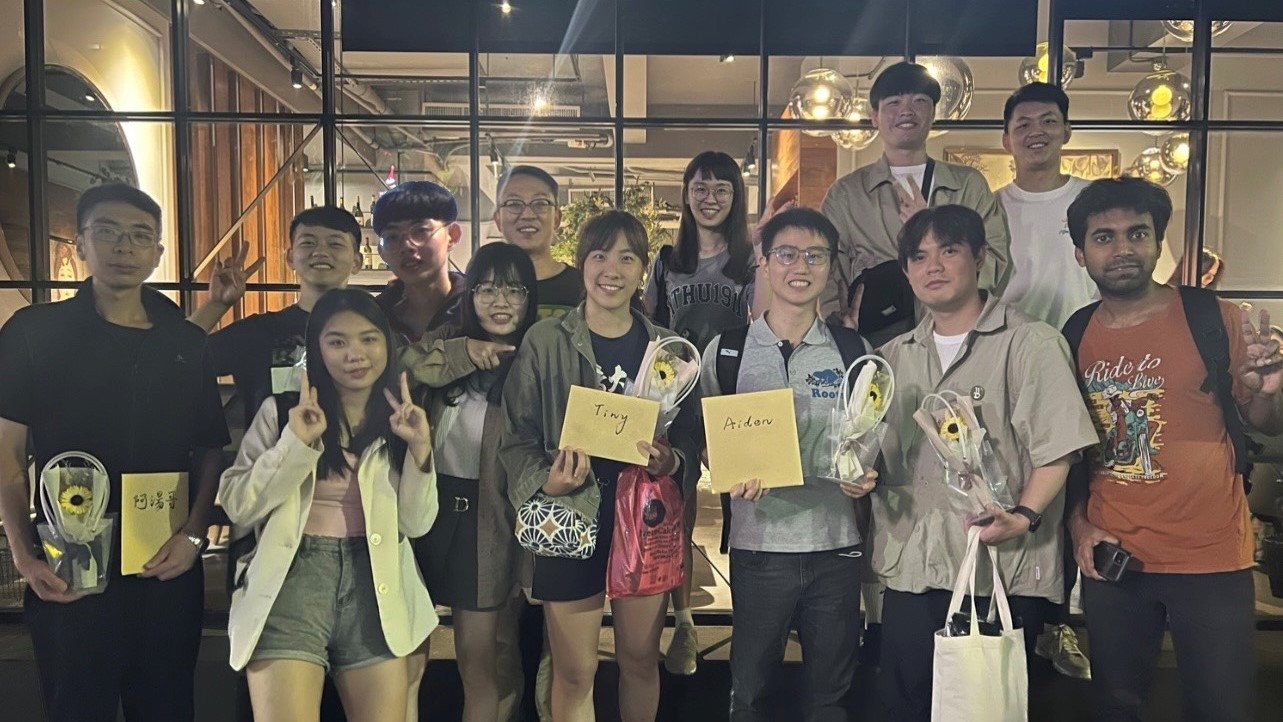
畢業生送舊 (2023/06/14)
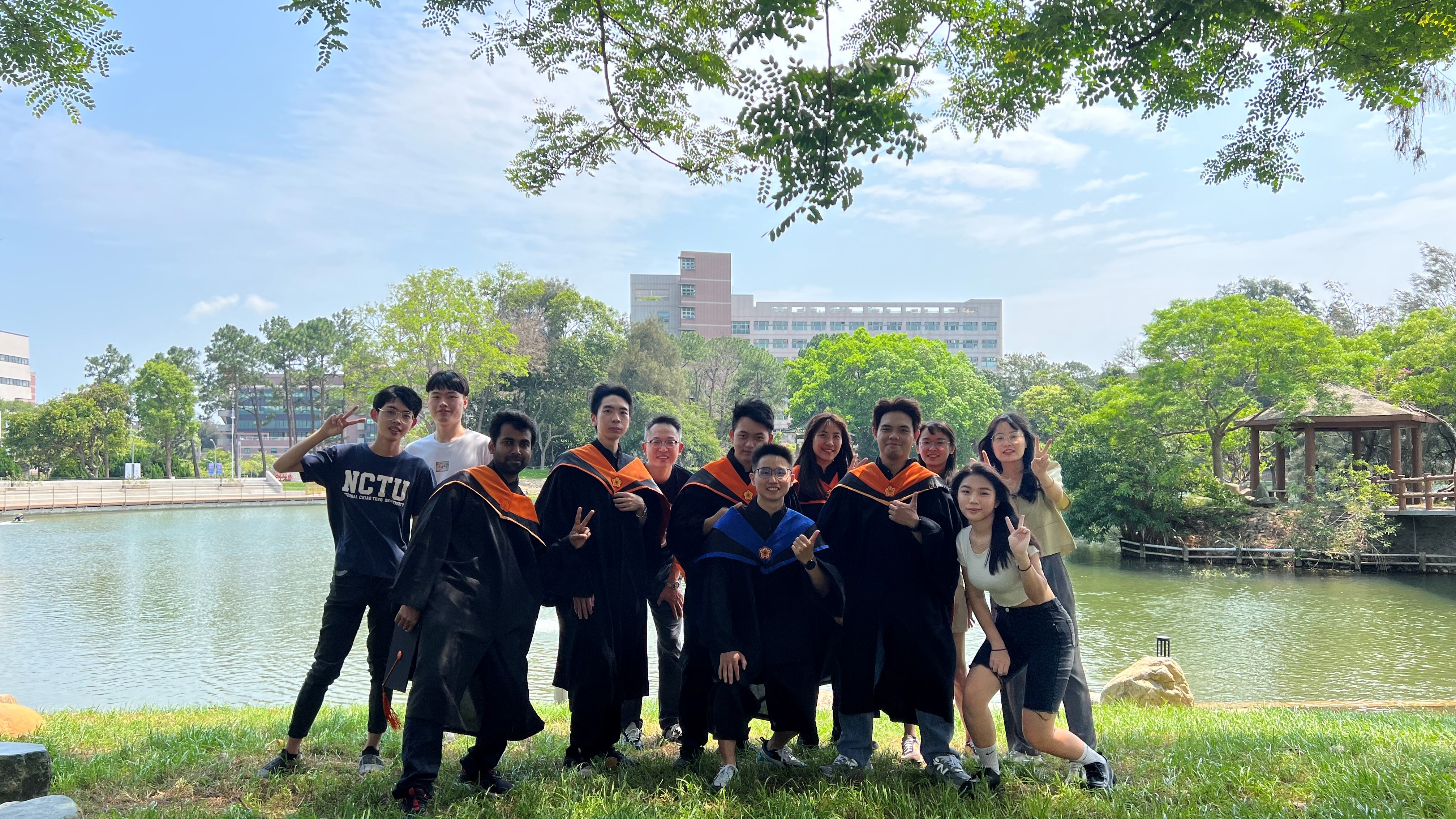
110級畢業照 (2023/05/18)

110級畢業照 (2023/05/18)

宜蘭行 (2023/02/11-2023/02/12)
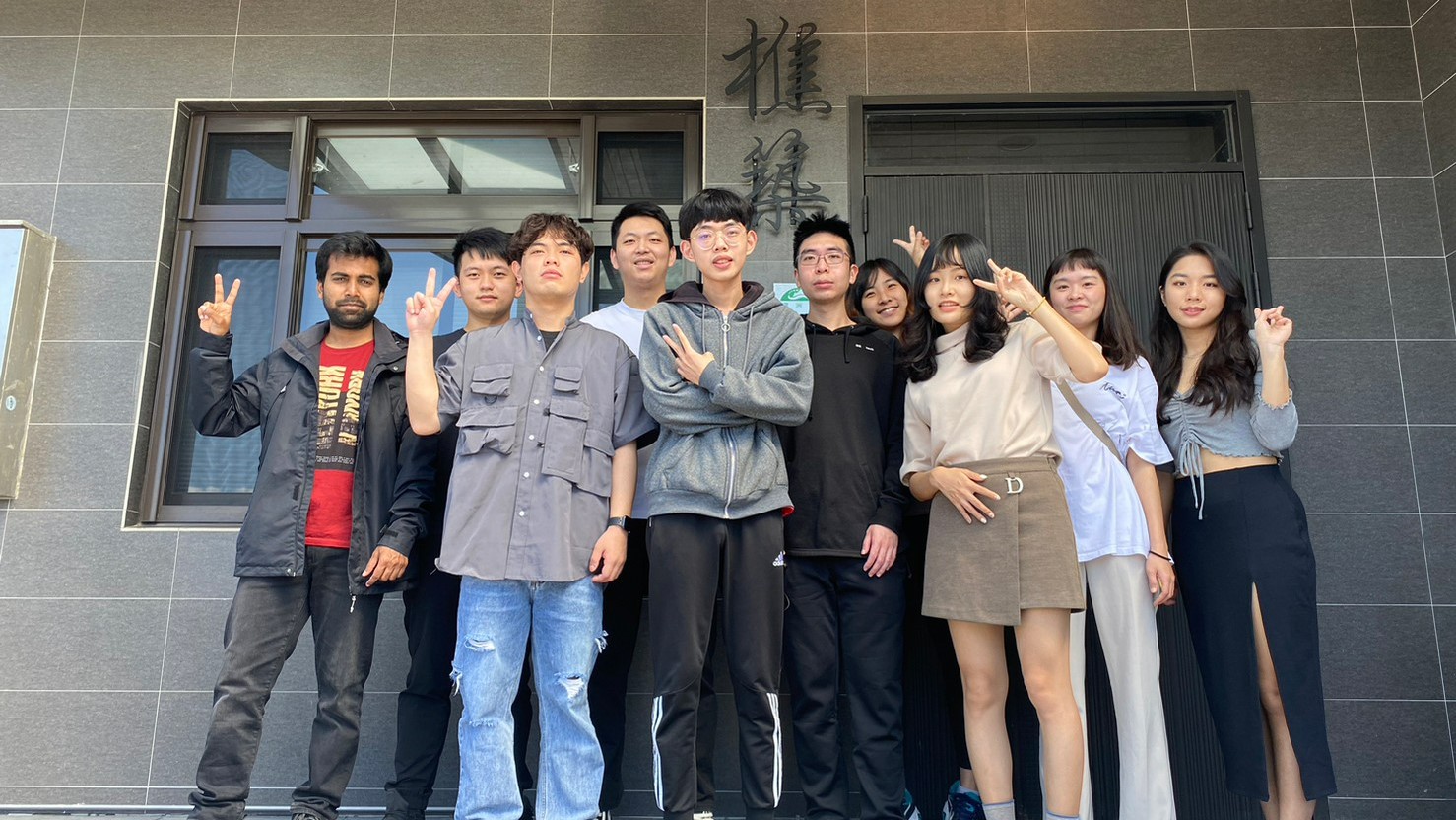
宜蘭行 (2023/02/11-2023/02/12)

宜蘭行 (2023/02/11-2023/02/12)
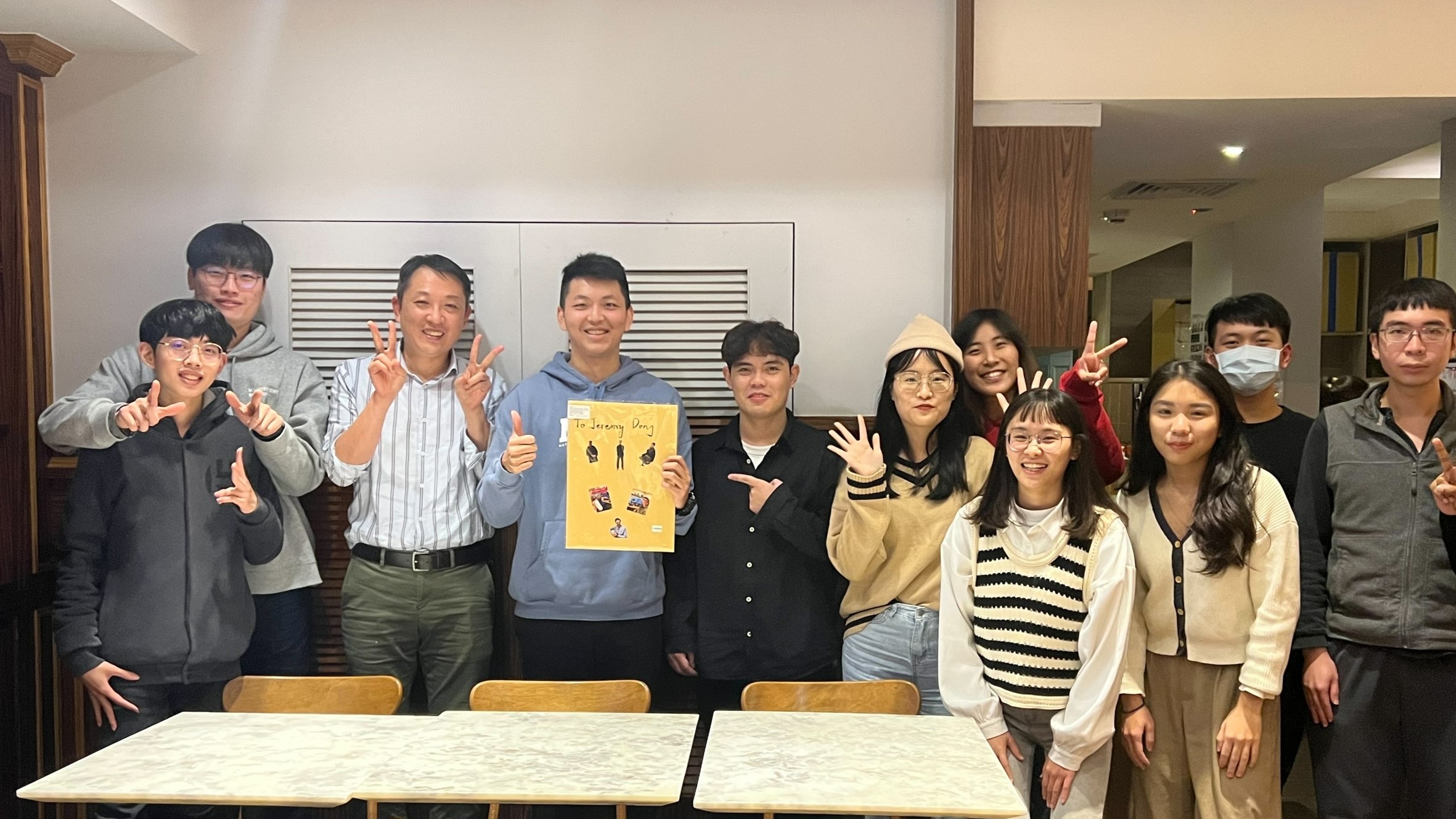
實驗室期末聚餐 (2023/01/03)
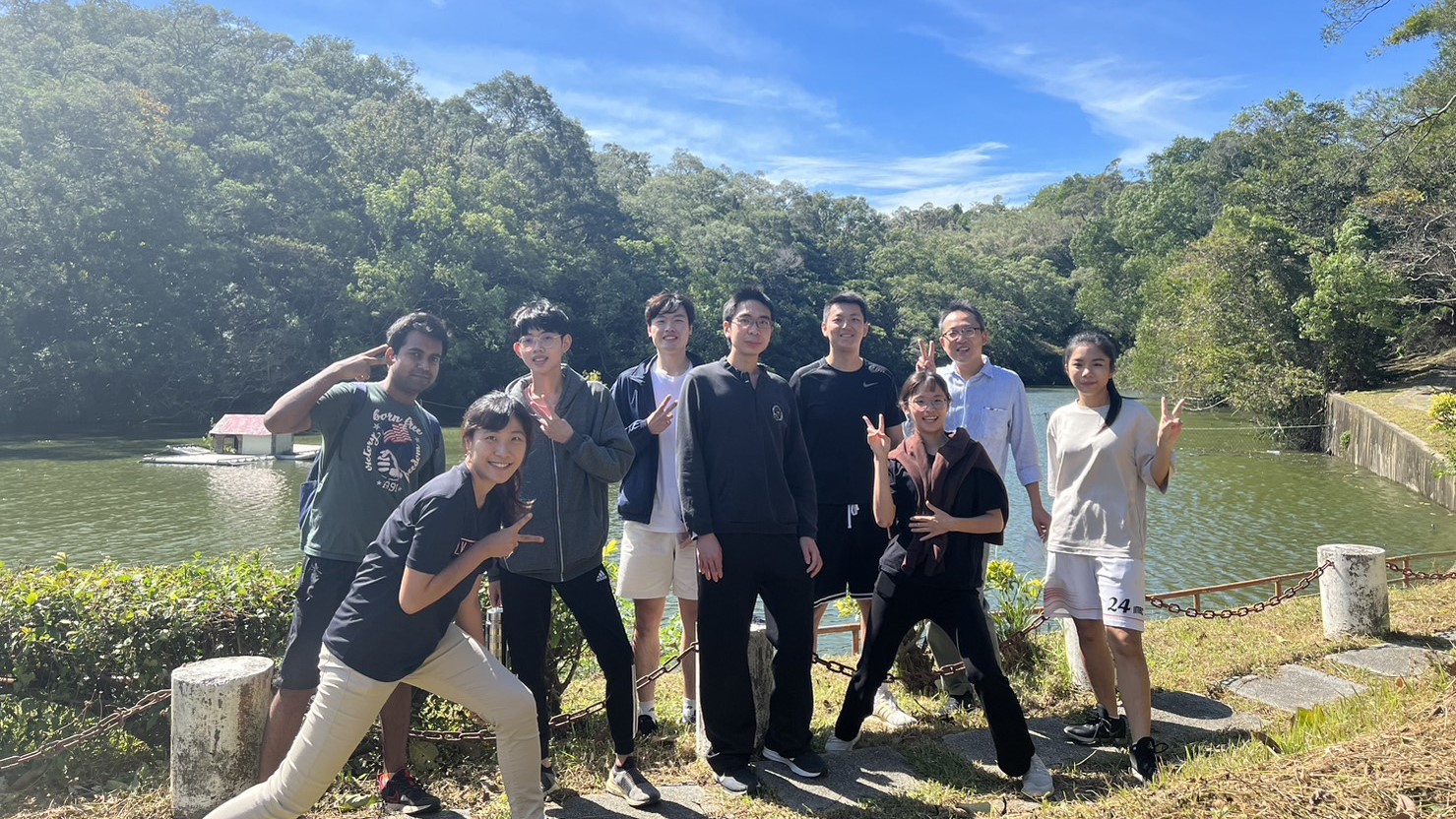
通訊所校園健走 x 迎新活動 (2022/11/01)
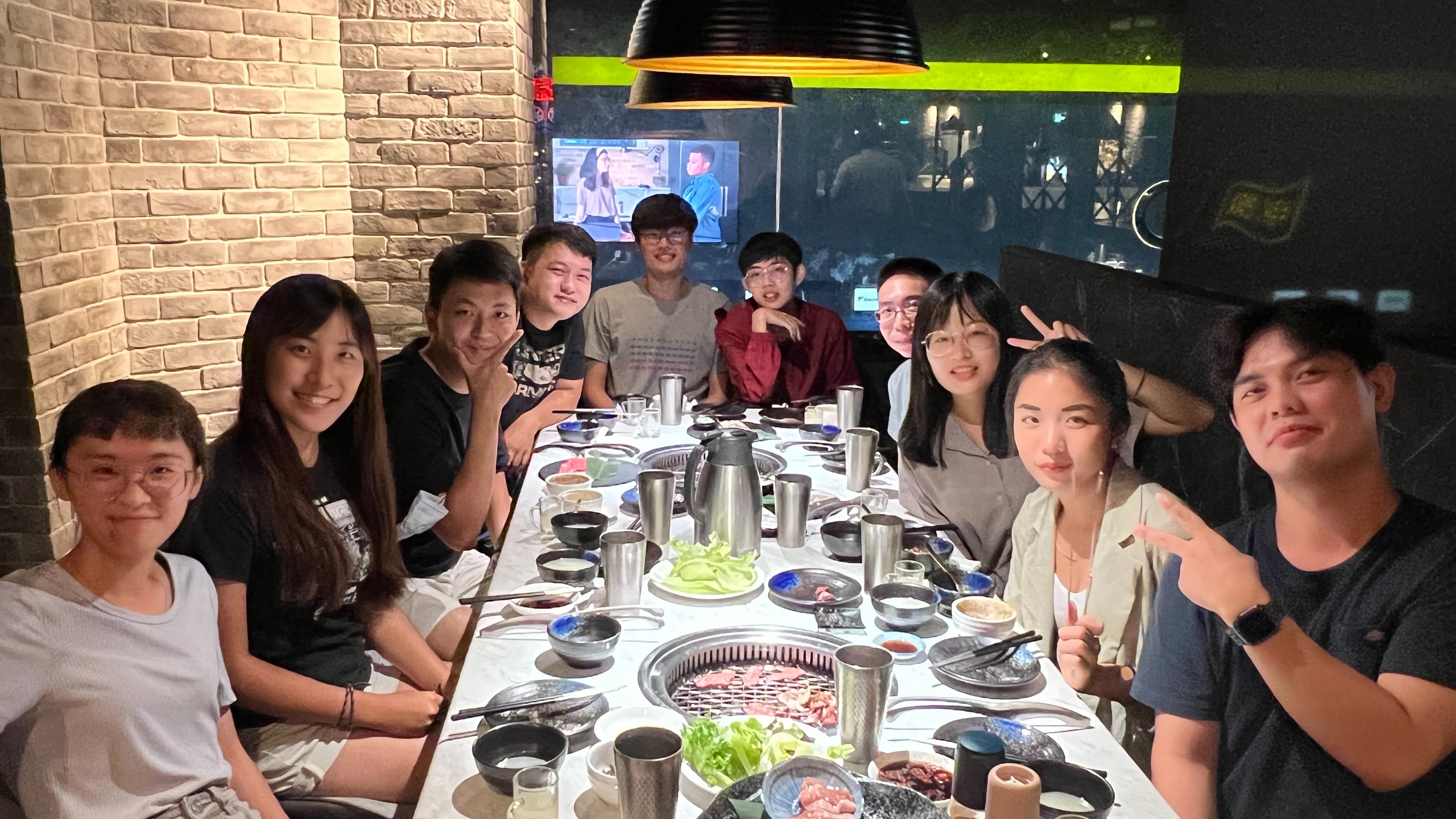
實驗室中秋聚餐 (2022/09/15)
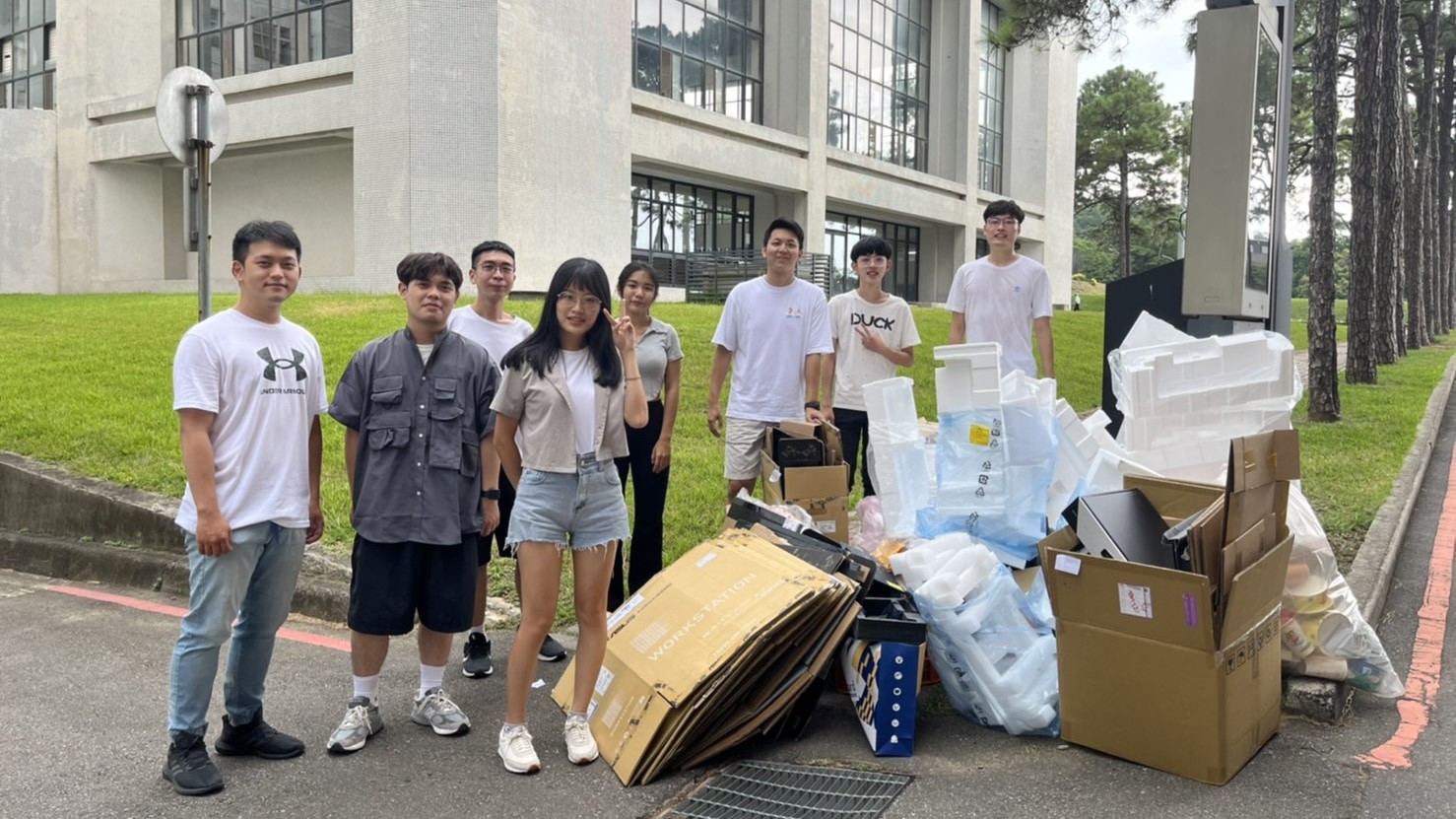
實驗室掃除 (2022/08/03)

新生茶會 (2022/08/03)
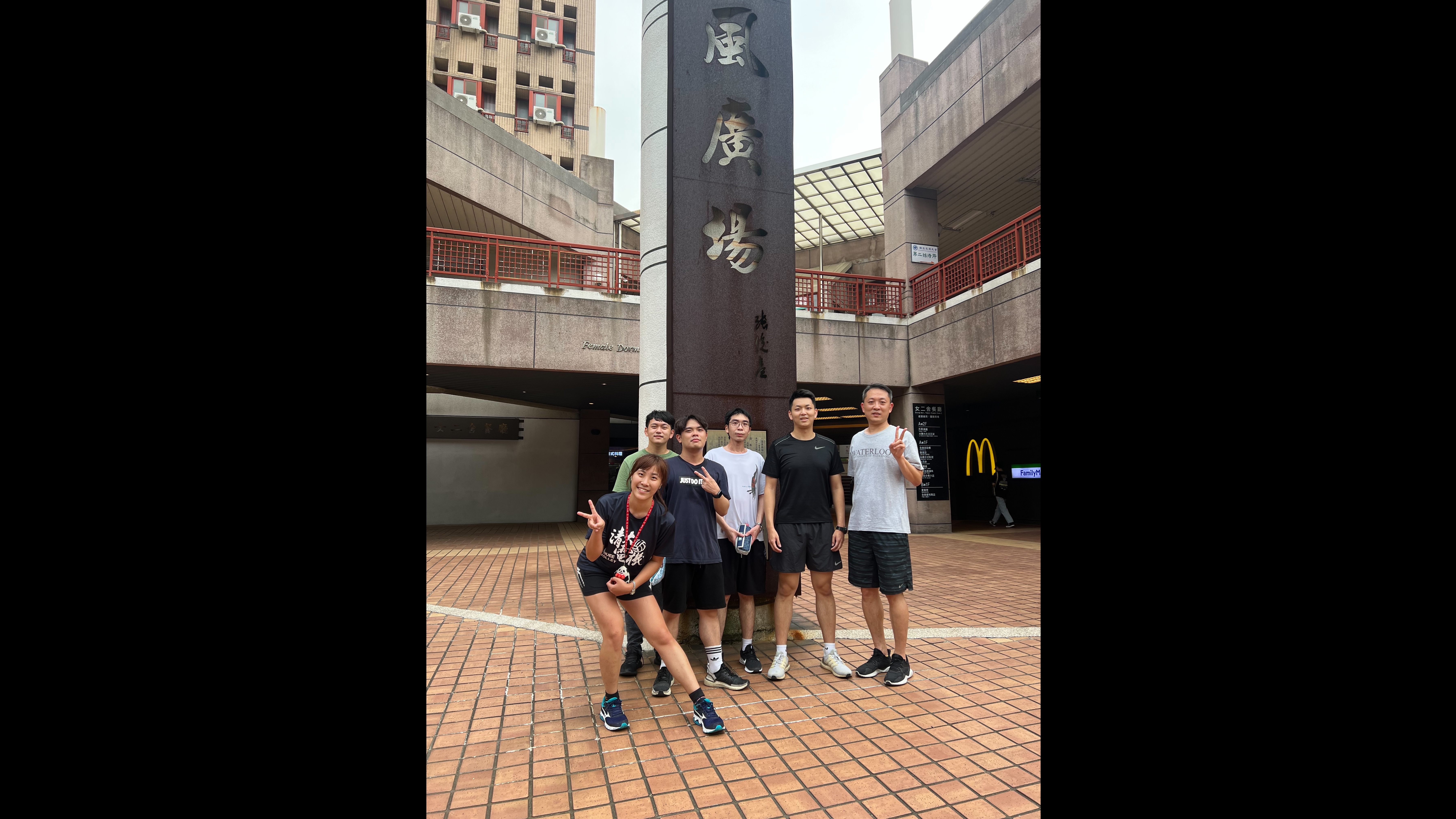
實驗室慢跑 (2022/03/16)
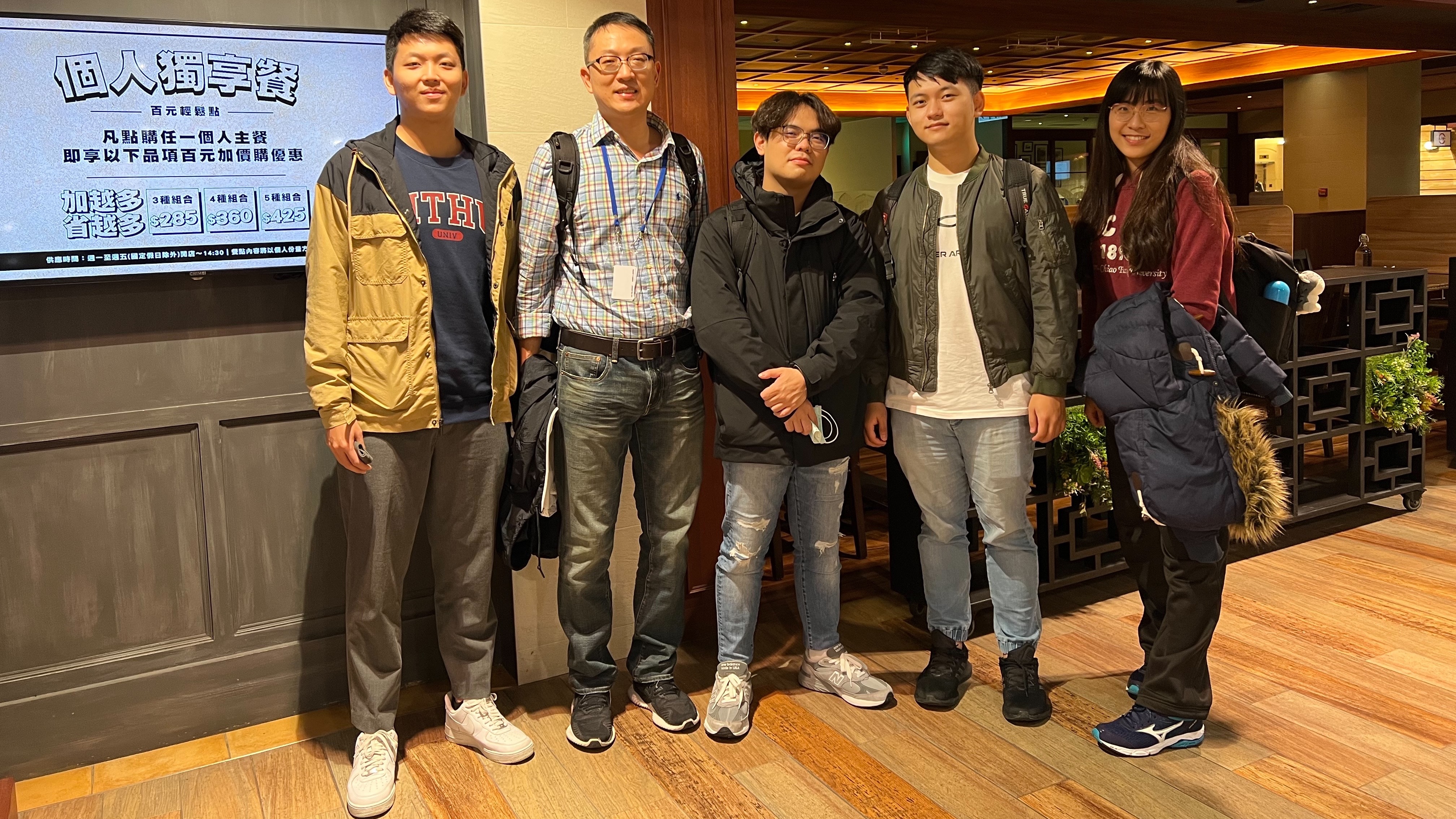
實驗室聚餐 (2022/03/02)
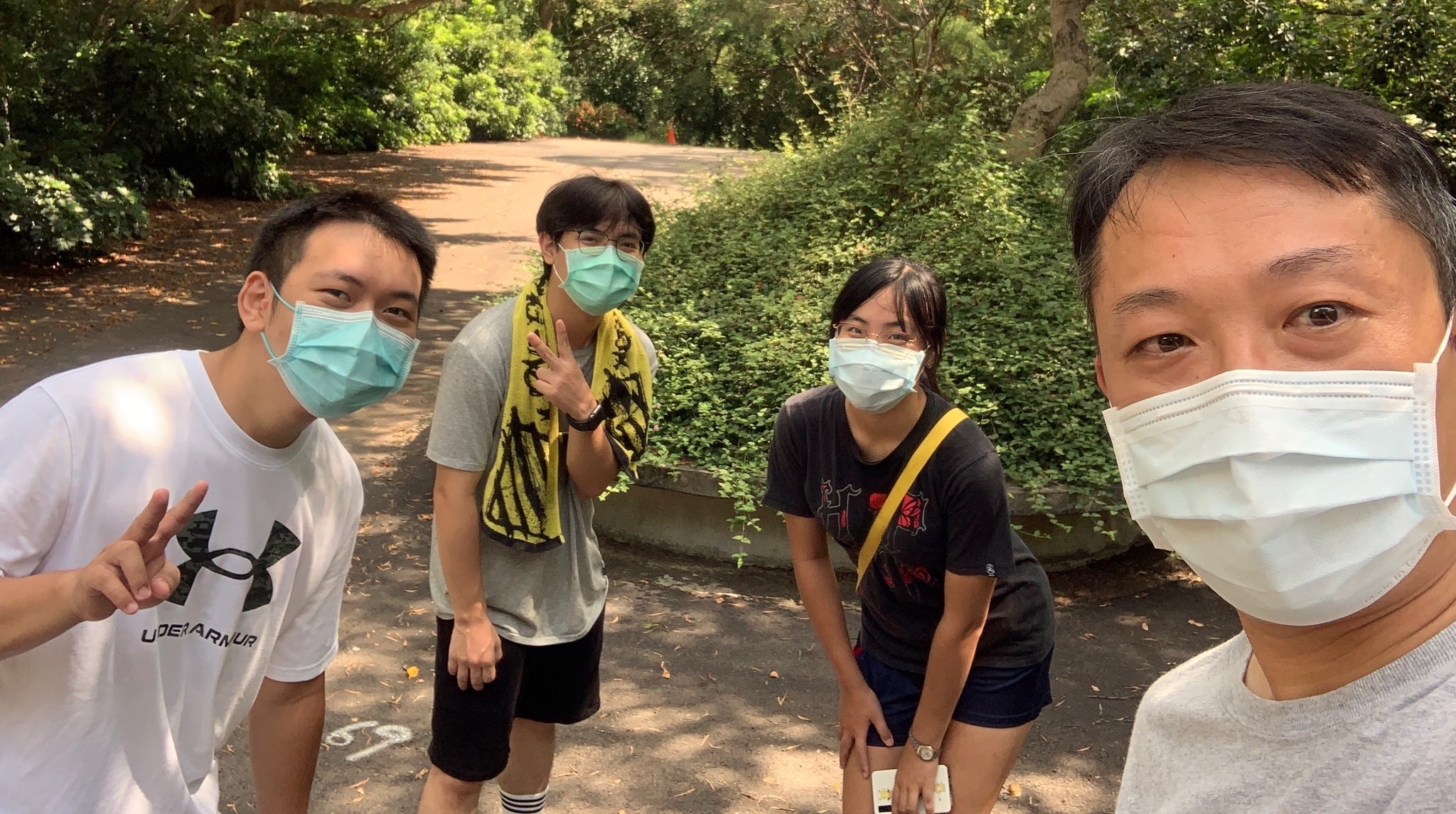
通訊所校園健走 x 迎新活動 (2021/09/23)
Member
Master Students
113級
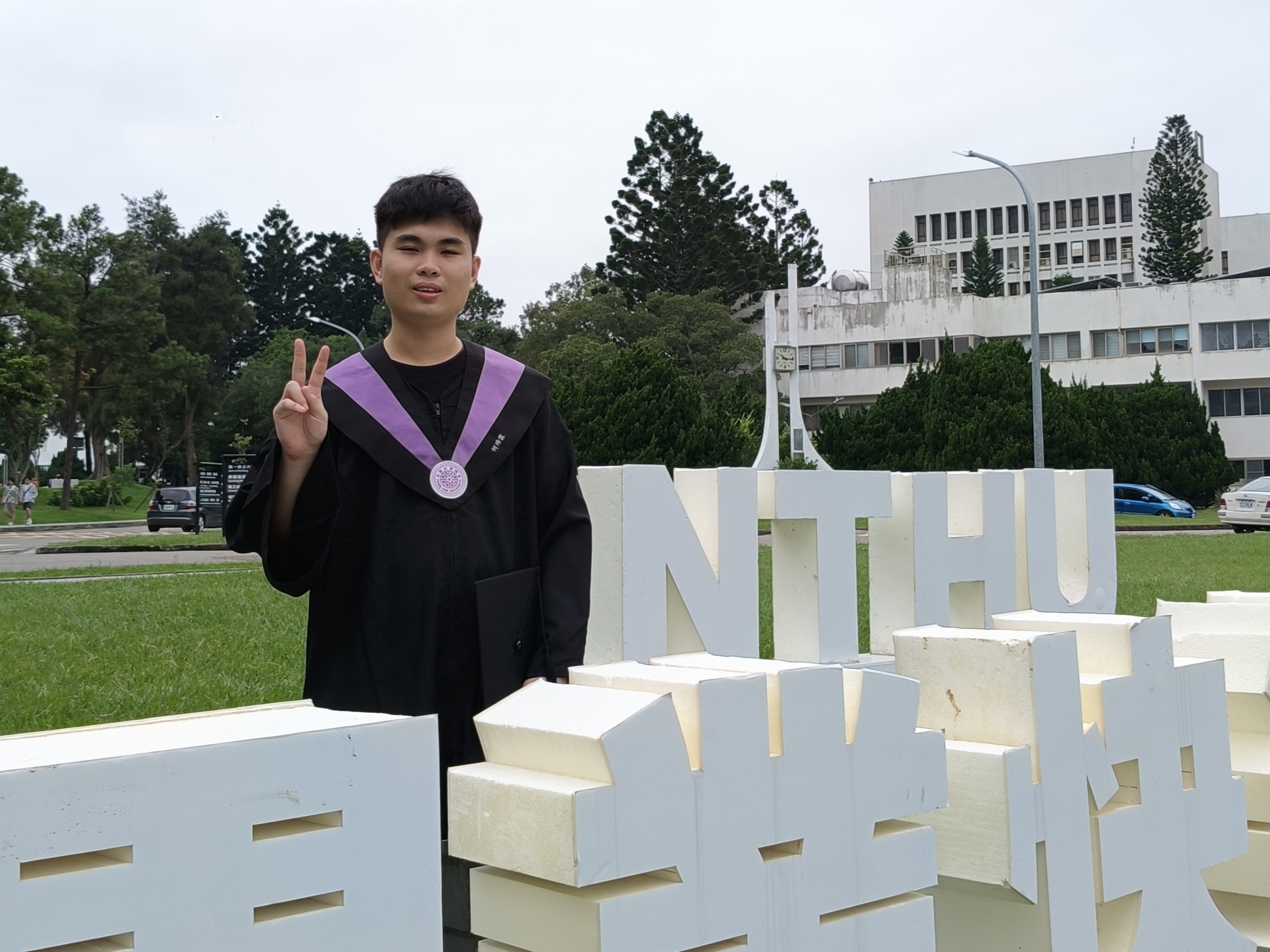
何沛霖
113級
碩一
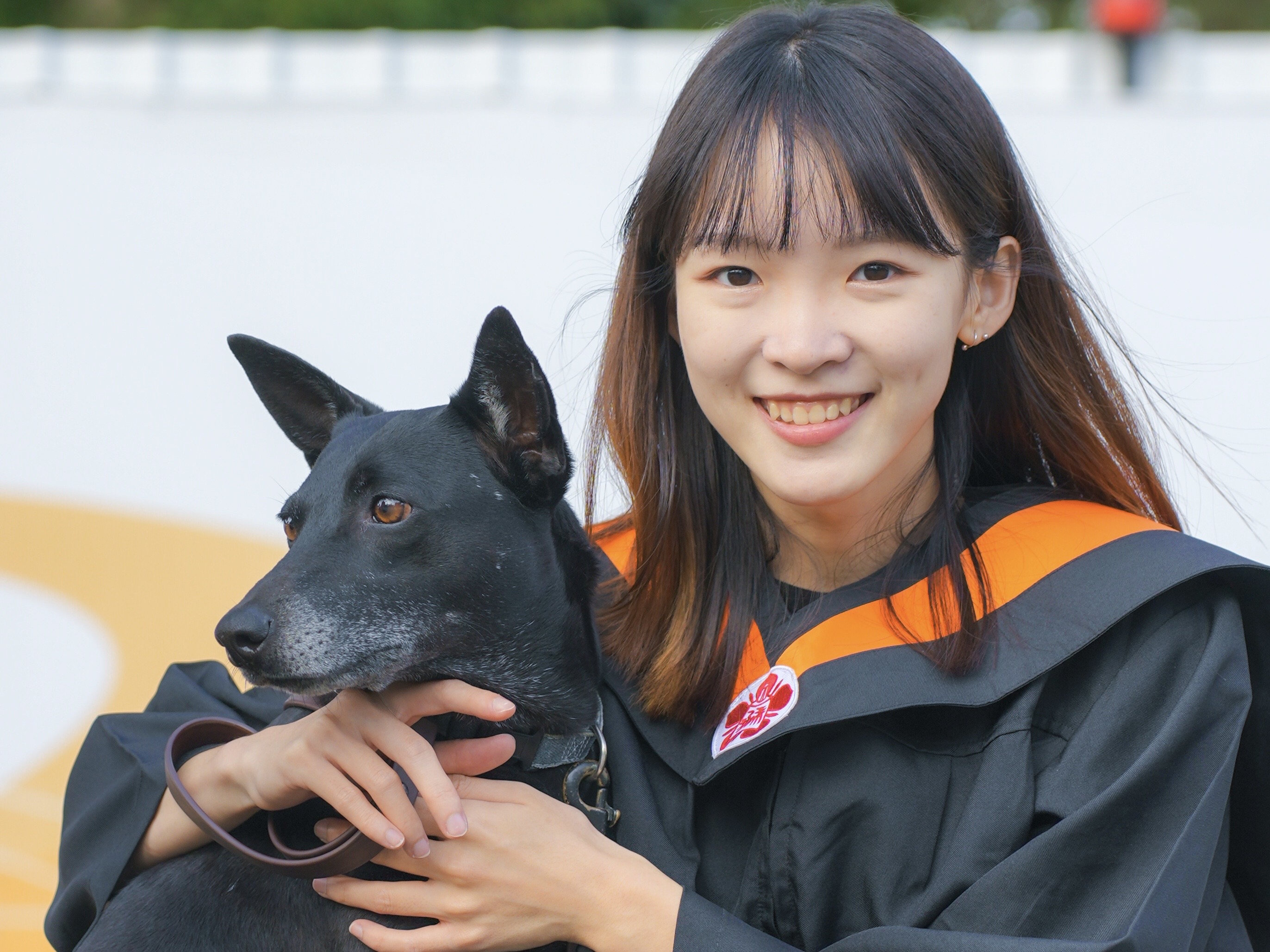
蔡文潼
113級
碩一

吳乙萱
113級
碩一

吳珮瑀
113級
碩一

陳家齊
113級
碩一
112級
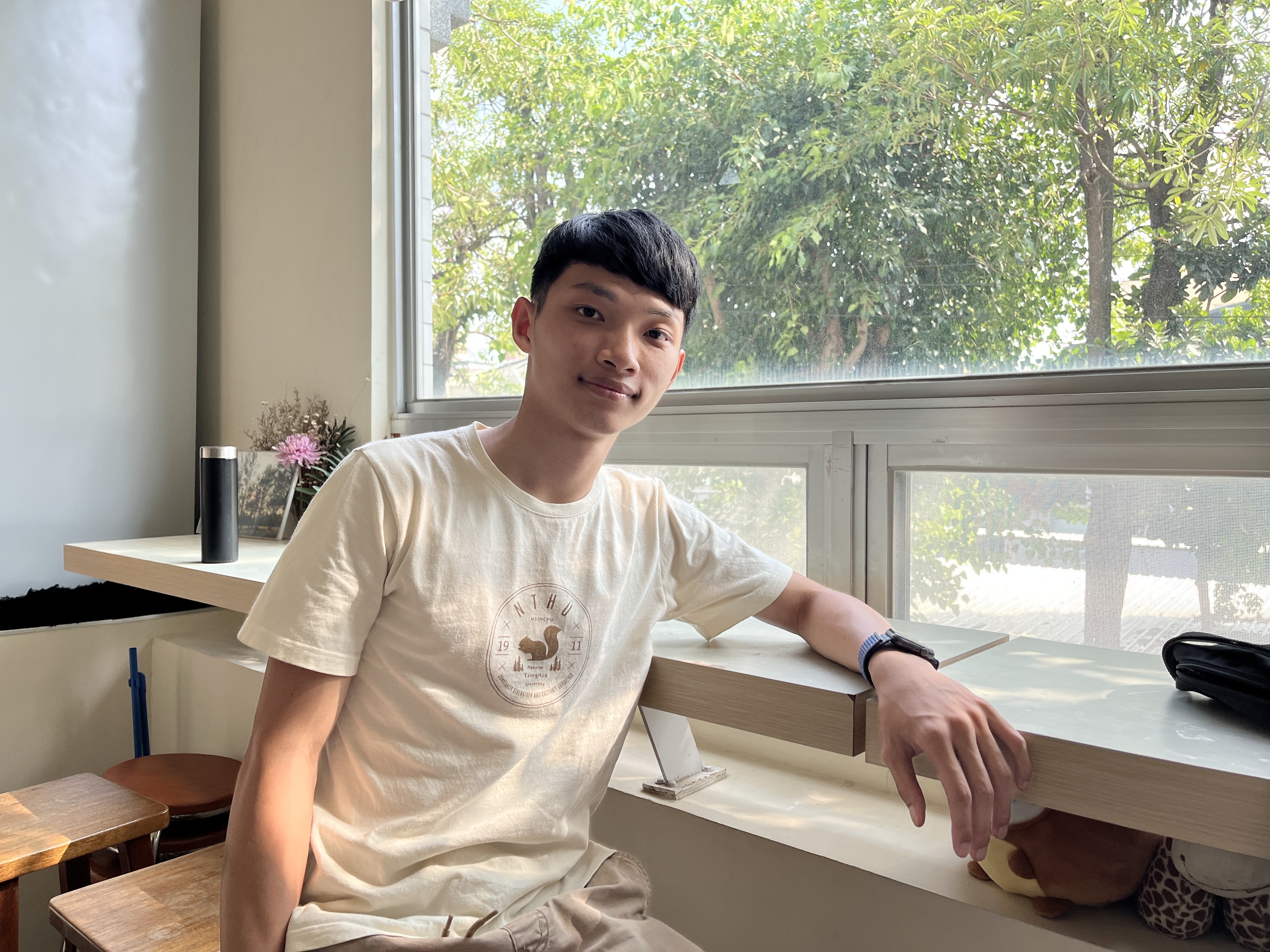
鄧萬霖
112級
碩二

許峰祥
112級
碩二

許湘玲
112級
碩二
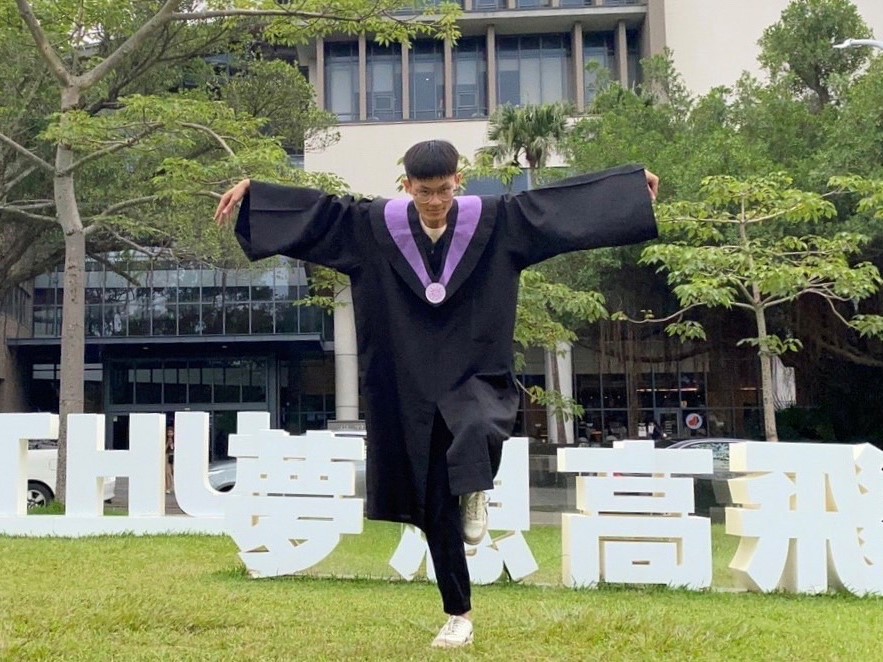
鄭璟珽
112級
碩二

鄭德龢
112級
碩二
111級

李宥橙
111級
已畢業

劉哲丞
111級
已畢業

吳宜倍
111級
已畢業

陳柔柔
111級
已畢業

向佳嫻
111級
已畢業
110級

莊承叡
110級
已畢業
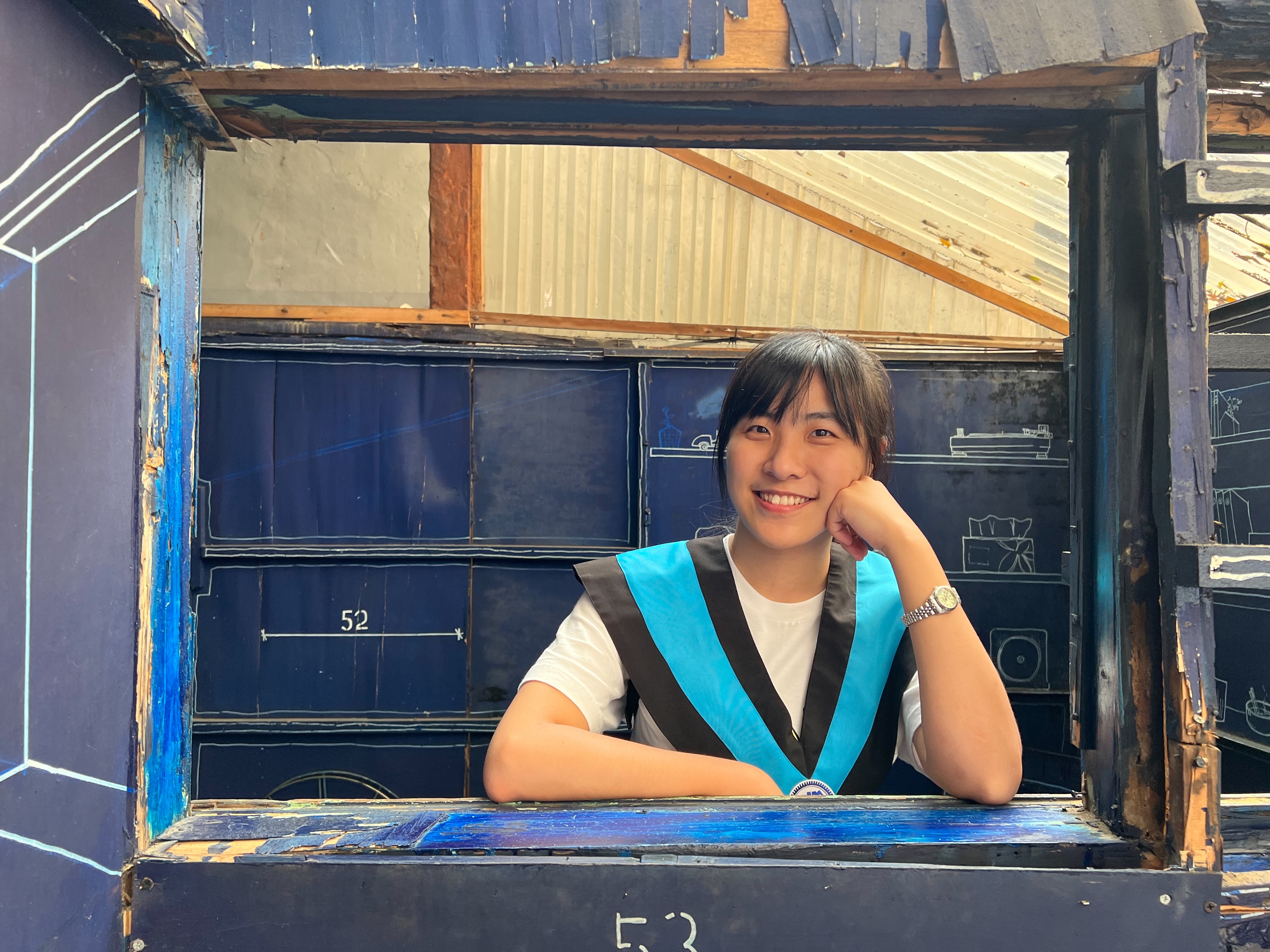
黃毅瑄
110級
已畢業

吳秉修
110級
已畢業

Raj Shekhar Bhatt
110級
已畢業
